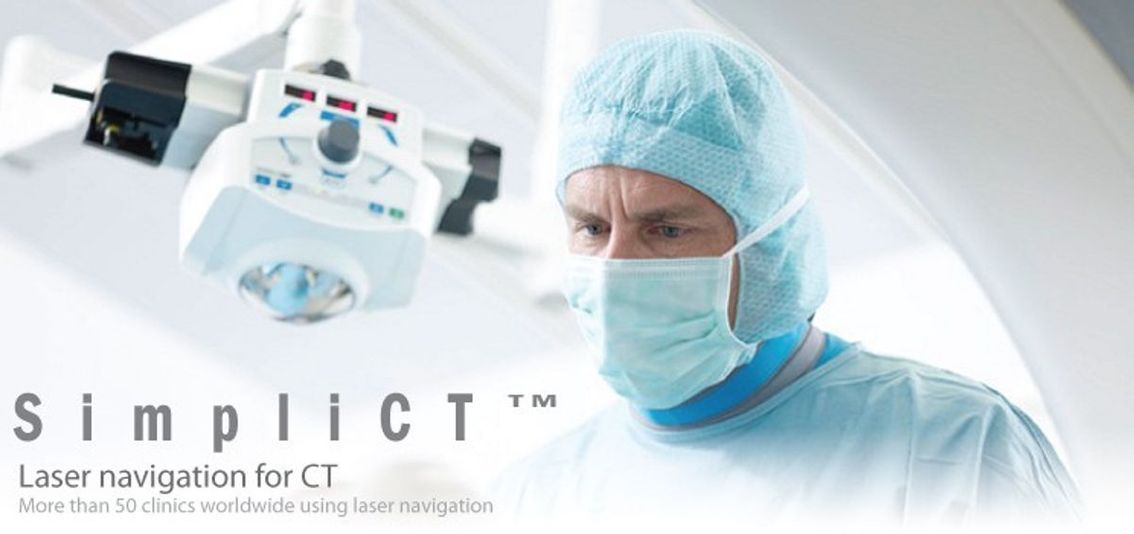



SimpliCT laser navigation in use world wide to decrease procedure time, radiation dose and potential complications in interventional radiology.
The quality and advantages of SimpliCT have been medically proven. Although still it is possible to match accuracy and speed, it needs a lot of practice to be able to achieve that quality and accuracy each time. When not matching that accuracy, it needs extra time, extra radiation exposure to reach the target. That is why SimpliCT is the best guarantee for a hospital that the patient will not be exposed more than absolute necessary to potential traumatic interventions.
Using the freehand technique by experienced interventional radiologists can be as accurate as when using the SimpliCT. Setting up the SimpliCT, making preparations to start the procedure, might take more time at start. When performing several interventions, the extra preparation time is spread equally over the amount of interventions. While using the SimpliCT there is more guarantee for an accurate intervention, also for the more experienced interventional radiologists. While using SimpliCT as guidance tool, the difference in accuracy between an experienced and a lesser experienced interventional radiologist will become much less.
With a direction (one or two angles), a distance and a proper entry point, each other point in the body (a 3D space) can be reached as accurate as the information is provided by the CT-scanner. The SimpliCT provides the guidance to keep the right direction/angle.
Accuracy provides decrease of procedure time, less radition and less risk for complications.
Read more in the following articles (from 2000 till 2017):

